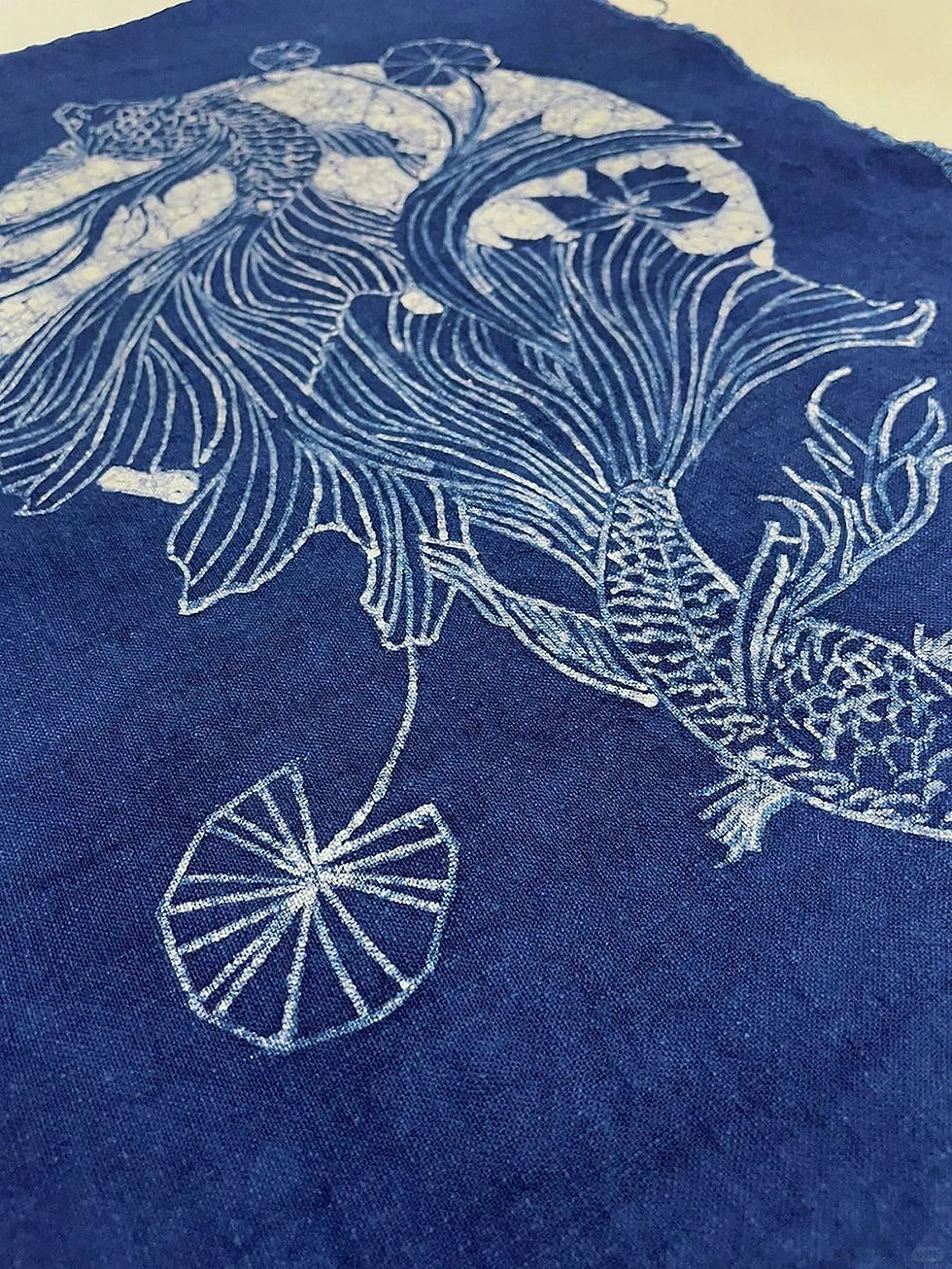Miao Batik (苗族蜡染)
Miao Batik: A history book worn on the body
By exploring the incredible realm of Miao batik, you'll uncover its fascinating origins, intricate methods, and the cultural significance each pattern holds.
Origins of Miao Batik
Miao batik's roots trace back to the Qin and Han dynasties, approximately 2,200 years ago. The Miao ancestors expertly used natural resources like insect wax and beeswax as dye-resistant materials, marking the beginning of this vibrant tradition.
Following the advancements during the Eastern Han, Western Jin, and Tang Dynasties, batik technology became well-developed and widespread across the nation. Although the technique began to fade in the Central Plains after the Song Dynasty, the ancient art of batik was preserved within the Miao communities in Guizhou and other southwestern areas, and it continues to be practiced today.
After the development of the Eastern Han Dynasty, the Western Jin Dynasty and the Tang Dynasty, the batik technology has been quite mature and popular throughout the country. After the Song Dynasty, although the batik technique gradually disappeared in the Central Plains, the ancient batik technique was preserved in the Miao settlements in Guizhou and other southwestern regions, and has been passed down to this day.
This innovation gave rise to a craft that celebrated the Miao people's identity, particularly through the use of indigo dye. Research indicates that the Miao community’s fabric-making skills reflect their bonds to the land and environment. Their techniques and themes have evolved, but the core elements of nature and storytelling remain central to their art.
The Batik Process: An Art in Motion
Creating Miao batik is a detailed and meticulous art form. The process involves several critical steps:
Preparing the Cloth: The cloth must be ground to ensure it absorbs the indigo dye effectively.
Wax Application: Miao women use hot wax to paint intricate designs on the fabric. This demands both skill and creativity, as artisans dip copper knives in hot wax to create patterns that reflect their cultural values.
Once the fabric is prepared, it is immersed in a vat of indigo dye. Here, pure magic unfolds—where the wax has been applied, the dye cannot penetrate, resulting in a vivid contrast that brings patterns to life.
After dyeing, the wax is carefully removed through boiling, revealing stunning designs. The entire process not only produces beautiful textiles but also highlights the dedication of the artisans.
The end result? Colorful pieces that are more than just fabric; they resonate with the history and cultural identity of the Miao people.

Unique Patterns: Stories Woven in Fabric
The designs found in Miao batik serve as a unique language. They include symbols like butterflies, which represent love and happiness, and dragons, symbolizing power and prestige. These elements result in textiles that convey powerful messages rooted in the beliefs and social structures of the Miao community.
For instance, a batik with a butterfly design might tell stories of love and happiness passed down through generations, while a dragon motif could reflect historical narratives of leadership and bravery. Engaging with a piece of Miao art allows you to experience the beliefs, traditions, and dreams cherished by the Miao people for centuries.
The butterfly pattern is prevalent in Miao costumes because, according to Miao legend, the butterfly mother gave birth to the Miao ancestor "Jiang Yang," making it the ancestor of the Miao people. The dragon pattern symbolizes auspiciousness and good fortune, embodying the shared consciousness of the Miao people and their hopes for a better life.
The Cultural Significance of Miao Batik
Miao batik is fundamentally tied to the Miao identity. It is more than just clothing; it acts as a vital medium for cultural expression and preservation. Each piece reflects the artisans’ commitment to their craft and their collective heritage.
An interesting statistic shows that nearly 80% of Miao artisans are women, who play a crucial role in both creation and education. The process of passing down this intricate skill is carried out through community gatherings, where older generations teach younger ones. Such practices foster pride and continuity in Miao culture.
Recently, Miao batik has gained international recognition, enhancing its role as a marker of ancient Chinese art. As global interest in this craft grows, a revitalization of indigenous traditions occurs, paving the way for new artistic expressions while honoring the past.

Miao Batik in Modern Times
In today's world, Miao batik has found its place beyond traditional garments. Fashion designers and artists globally are embracing Miao batik, merging history with contemporary styles.
For instance, modern fashion houses often showcase Miao batik patterns in chic clothing lines and accessories, breathing freshness into the ancient technique while maintaining its integrity. This blending not only satisfies aesthetic demands but also honors the timeless contributions of the Miao people to textiles.
Cultural tourism has also boosted the status of Miao batik, allowing visitors to engage with artisans and learn this beautiful art form firsthand. Statistics reveal that cultural tourism in Miao regions has increased by over 60%, proving beneficial for local economies and ensuring the craft's sustainability for future generations.
The Legacy of Miao Batik
Miao batik stands proud as a statement of artistry, history, and culture. Each piece narrates the essence of the Miao people, preserving their stories, dreams, and artistry for years to come.
Whether you explore the breathtaking landscapes of Miao heritage or appreciate the rich art forms through cultural exchanges, experiencing Miao batik is nothing short of transformative.
The next time you admire a piece filled with intricate designs and vibrant colors, remember this: you are looking at a living history book—an embodiment of culture and creativity that eloquently transcends time. Each design invites you to connect with the tales waiting to be discovered, showcasing the skill and heart that the Miao people have woven into their art.






